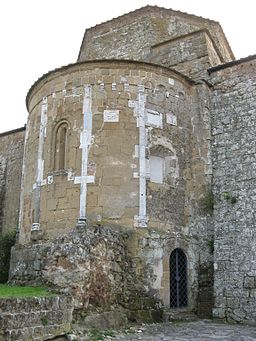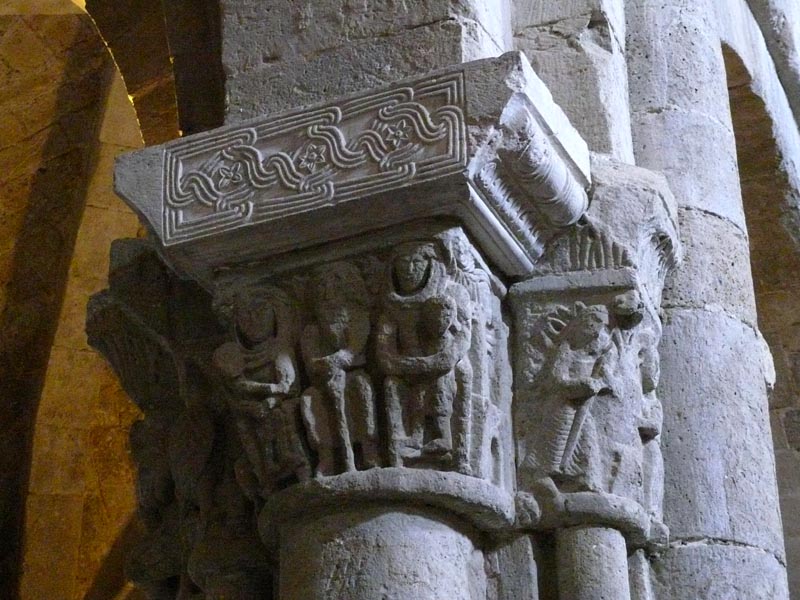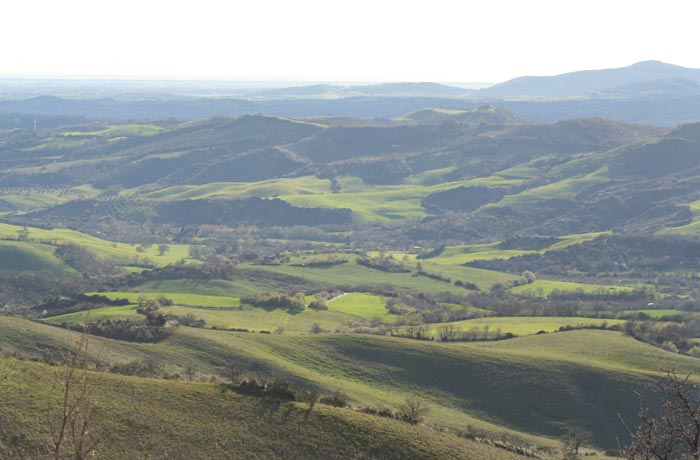Il duomo di Sovana, tomba di San Mamiliano [1]
|
|
Il duomo di Sovana, tomba di San Mamiliano |
Il duomo di Sovana, tomba di San Mamiliano. Mamilian of PalermoSaint Mamilian (Mamilianus) of Palermo, who is venerated with Nympha (Ninfa), Eustotius (Eustozio), Proculus (Proculo, Procuro), and Golbodeus (Golbodeo, Golbudeo), was a bishop of Palermo of the fifth century.[1] Mamilian lived in Sicily at a time when the Vandals dominated the island.[1] He served as bishop of Palermo but was exiled to Africa by the Vandals, who adhered to Arianism, around 450 AD with some Christian companions.[1] One source states that Mamilian was exiled to Tuscany by Genseric, the Vandal king.[2] However, through the intercession of an African bishop or by some sympathetic Christians, he escaped to Sardinia.[1] After that, he spent time on the island of Montecristo. According to a legend on Montecristo, Mamilian defeated a dragon on the island, and also changed the island’s name from Montegiove ("Jove's Mountain") to Montecristo ("Christ's Mountain").[3] A community of hermits, said to have been Mamilian’s followers, lived on the island, and around 600 AD, a monastery was built.[3] He subsequently went also to the island of Giglio, where he died.[1] Golbodeus’s name may a be a corruption of Quodvultdeus, a name shared by another 5th-century saint.[4] Veneration According to a tradition on Giglio, inhabitants of Elba and Genoa attempted to steal Mamilian’s relics on the very day of his burial[5] and the saint’s body was torn to pieces. The island of Giglio kept the saint’s arm.[5] Some sources say Mamilian's relics were translated to Rome, to the Church of Santa Maria in Monticelli, and subsequently to Spoleto.[1] Some of his relics may have been taken to Palermo.[2] Another tradition states that Cosimo III de' Medici, Grand Duke of Tuscany returned Mamilian’s entire body to Giglio in the 17th century.[5] On the island of Giglio, celebrations dedicated to Saint Mamilian start on September 15 and last for four days, consisting of a process of his relics (Mamilian’s arm), games, music, and a traditional mass.[5] In 1673, Archbishop Juan Lozano of Palermo erected statues to Mamilian, Eustotius, Proculus, and Golbodeus in the cathedral of Palermo.[6] The statues were made by Travaglia (Mamilian, Golbodeus) and Antonio Anello (Eustotius, Proculus).[6]
|
Mappa Duomo di Sovana, la Concattedrale dei Santi Pietro e Paolo | Ingrandire mappa
|
|
|
Sovana
|
||||
 |
 |
 |
||
| Rocca Aldobrandesca | Chiesa di Santa Maria Maggiore | Sovana, Duomo
|
||
|
||||
 |
 |
 |
||
|
||||
Sovana Duomo Interiore
|
||||
 |
 |
 |
||
Il duomo di Sovana, capitelli
|
||||
 |
 |
 |
||
Tomba del Sileno Tomba Folonia The Ildebranda Tomb Colombari Via Cava Il Cavone Via Cava di Poggio Prisca Tomba dei Leoni Cappella di San Sebastiano Via cava di San Sebastiano La Tomba della Sirena | Siren Tomb Via cava di San Sebastiano Le Vie Cave tra Sovana e Pitigliano | Openstreets Mappa | Sovana e la Via Clodia Walking through the Etruscan necropolis of Sovana | From Sovana to Via cava di San Sebastiano and the Tomba della Sirena (Siren Tomb) | Download pdf
|
||||
 |
||||
Podere Santa Pia, garden view over the Maremma hills (April) |
||||
Questo articolo è basato sull'articolo Mamilian of Palermo dell' enciclopedia Wikipedia ed è rilasciato sotto i termini della GNU Free Documentation License. |
||||
